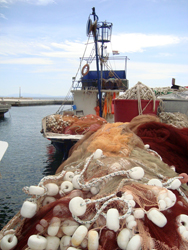Improved fishing gear preserves marine environment
The 'Development of fishing gears with reduced effects on the environment' (Degree) project created new equipment and practices for minimising the impact of trawling on the seabed. The types of gear investigated include otter trawls, beam trawls and dredges. Otter trawling takes its name from the large 'otterboards' used to keep the trawl net open, whereas beam trawling uses a solid metal beam to hold open the mouth of the net. Fishing dredges employ a comprising chain mesh and are often used for catching shellfish. Researchers worked closely with the fishing industry to develop alternative fishing gear and gear modifications. The modifications helped to reduce the physical forces acting on the seabed. The aim was to lower the mortality rate of bottom-dwelling invertebrates and non-target fish during trawling. The EU-funded project also investigated the economic effects for fishermen following adoption of the new equipment. The cost and productivity of a modified beam trawl was assessed and compared to vessels operating conventional beam trawls. In addition, the change in habitat damage was compared to the change in the level of bycatch, the name given to non-target species unintentionally caught during fishing. This enabled scientists to directly compare alternative gears by taking into consideration the environmental benefit and the relative cost effectiveness to be gained. The impact of the new designs and techniques were determined by modelling the effects on sediments, conducting fishing experiments and studying tracks made in the seabed. Scientists also developed and tested release panels, electrified pulse beam trawlers and a low-impact oyster dredge. Application of release panels improved fish quality and reduced catch handling time. Although the overall performance of the panels was positive, they performed best on large beam trawlers. The developed pulse trawl increased the survival of discarded fish, while the design of the oyster dredge also proved successful. Data from the Degree project was used to develop physical and biological models that were verified by tests at sea. The model was capable of predicting fishing mortality for non-target species. The result was a tool that can be used to manage fisheries by applying combinations of fishing gear and sediment types that can minimise environmental impact to the seabed.







